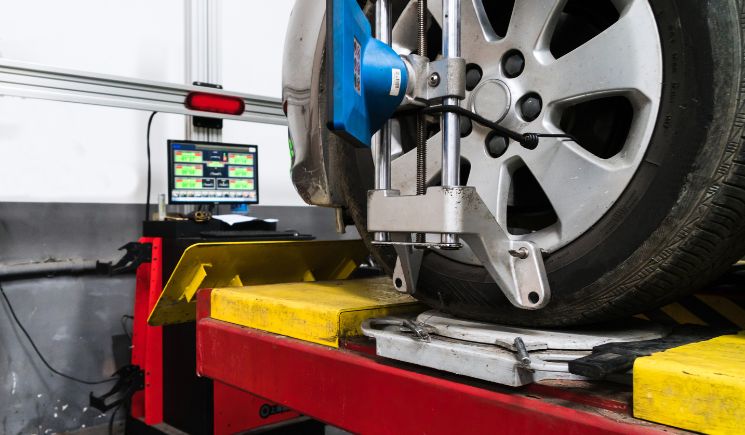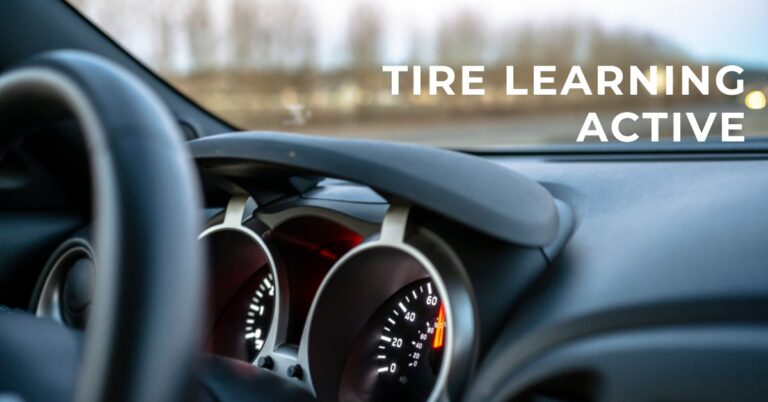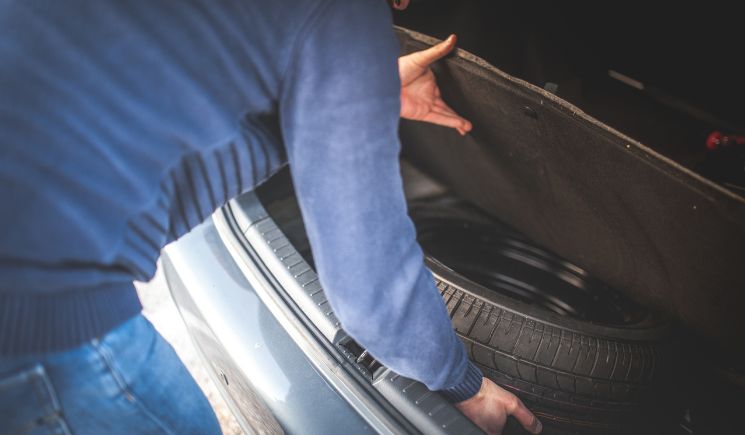Why Are My Rear Tires Wearing Out So Fast

Are you noticing that your rear tires are wearing out faster than the front ones? You’re not alone! Many drivers have noticed this same phenomenon and it can be a major source of frustration. But don’t worry – understanding why your rear tires wear down quicker isn’t as difficult as it may seem. In this article, we’ll explore some common reasons for rapid tire wear in the back and how to fix them quickly. So let’s get started!
Table of Contents
- Underinflation
- Overinflation
- Improper Wheel Alignment
- Uneven Tire Tread
- Driving Habits
- Frequently Asked Questions
- Conclusion
Underinflation
Underinflation is one of the primary culprits when it comes to premature tire wear. When air pressure in your tires drops, their contact area with the ground increases causing them to flex more than they should and resulting in uneven wear on their surface over time. This could be due to slow leaks, or simply just forgetting to check your tire pressures regularly – something which can easily be done using a simple tire gauge from any auto store.
It’s also important to ensure you’re driving safely regardless of whether your tires are correctly inflated or not. Rapid acceleration and abrupt braking can further accelerate this problem by putting excessive strain on already weakened tires and cause even greater damage.
Next up: Overinflation – how too much pressure can also spell trouble for your car’s rubber parts.
Overinflation
After going through the causes of underinflation, it’s now time to move on to overinflation – a condition in which the rear tires are inflated too much. Overinflation has several effects that can lead to premature tire wear:
- It reduces the amount of contact between the tire and surface, leading to reduced traction and increased risk of skidding.
- The ride quality is significantly worse with an overly firm feel due to less grip provided by the tires.
- Greater forces are placed upon sidewalls when cornering or driving on uneven surfaces as they don’t have enough flexibility.
- Accelerated treadwear can occur because there isn’t enough cushioning from air pressure against the road.
- Increased fuel consumption results from greater rolling resistance caused by having harder tires.
In addition to all these issues, improper wheel alignment may be causing your rear tires to wear out quickly as well. When wheels aren’t aligned correctly, it causes them to point slightly outward instead of straight ahead resulting in more drag and stress being applied onto the back end of your vehicle while driving. This leads to excessive friction and heat buildup, accelerating wear on both inside and outside edges of each tire respectively without proper care. To avoid any further damage, make sure you get your car checked regularly if you suspect something is wrong with its alignment!
Improper Wheel Alignment

Wheel alignment is one of the most important factors when it comes to keeping your tires in good condition. Poor wheel alignment can cause excessive wear on either your front or rear tires, depending on the type of misalignment you have. If you find that your rear tires are wearing out faster than expected, then it could be a sign that there is an issue with wheel alignment.
The three main types of wheel misalignments are camber, caster and toe-in/toe-out. Camber refers to how much the tire slants inward or outward when looking at it from the front; caster looks at how far forward or back the steering axis tilts; and toe-in/toe-out measures how close together or apart the wheels are when looking at them from above. All three need to be correct for optimal handling, braking performance and tire life.
If any of these measurements are incorrect, then it’s likely that one side will take more pressure than another – resulting in uneven tire wear over time. You should have your car checked by a professional if you suspect this might be happening so they can make sure everything is set up correctly and give you advice on what needs to be done moving forward. From there, tackling any underlying issues with uneven tread becomes easier and safer.
Uneven Tire Tread
Uneven tire tread is one of the primary causes for tires wearing out quickly. It can be caused by a number of issues, such as poor alignment or an issue with the suspension system. Uneven wear on tires will reduce their life and cause them to need replacing much sooner than expected.
The most common symptom of uneven tread is when one side of the tire looks more worn down than the other. This may also appear in regular patterns that alternate between different sides of each tire. If left unchecked, this could lead to problems like blowouts and accidents due to reduced traction control.
To prevent this problem from occurring it’s important to have your vehicle regularly inspected for any signs of misalignment or damage to components such as shocks and struts which affect how tires interact with the road surface. Additionally, having a professional rotate your tires every 5-6 thousand miles can help keep all four evenly used and maximize their lifespan before needing replaced.
Moving forward, it’s important to consider driving habits which can further impact tire wear and tear over time.
Driving Habits
Driving habits can have a major effect on the wear and tear of tires. Take for example, professional race car driver Michael Schumacher – he has won seven world championships due to his impeccable driving technique. His smooth acceleration and braking techniques allow him to take corners with ease, minimize tire friction and maximize performance.
It’s important to note that everyday drivers do not need to reach such levels of expertise; however, there are several key points one should consider in order to avoid excessive tire wear:
- Make sure your vehicle is properly aligned – Poor alignment leads to increased resistance between the wheels and the road surface which will cause abnormal tire wear.
- Monitor your speed – Accelerating too quickly or taking sharp turns can increase stress on the tires, so it’s best to drive at reasonable speeds.
- Avoid potholes – Not only does this lead to damage caused by debris, but sudden jolts when hitting potholes can create strain on the suspension system. This puts extra force onto your tires leading them to prematurely degrade.
The bottom line is that if you want longer lasting tires then you must practice smart driving habits like those mentioned above. With proper care, maintenance and attention you will be able maintain optimal performance from your vehicle as well as keep your tires healthy for years down the road.
Frequently Asked Questions
What Type Of Tires Should I Use To Prevent Fast Wear?
Choosing the right tires for your vehicle is paramount in preventing fast wear. When selecting tires, it’s important to consider the type of driving you’re doing as well as the climate and terrain you’ll be navigating. For everyday drivers, all-season or touring tires are a great option as they offer good grip on dry roads while also providing decent traction in rain and light snow. Those who live in areas with extreme weather conditions should consider winter/snow tires that provide superior performance in cold temperatures and snow covered surfaces. High performance sports cars require special high performance summer tires designed specifically for maximum acceleration and cornering capabilities. Ultimately, choosing the right tire will help extend its life expectancy significantly – so make sure to do your homework before making a purchase!
How Often Should I Rotate My Tires To Prevent Wear?
Tire rotation is essential for maintaining a healthy, safe ride. How often you rotate your tires depends on the type of vehicle you have and how aggressively it’s driven. Generally speaking, many automakers recommend rotating your tires every 5-7 thousand miles or at least twice a year if you don’t drive frequently. This will help ensure even wear patterns across all four tires and extend their lifespan significantly. A tire rotation also helps balance weight distribution in the car to reduce drag and improve fuel efficiency.
Are There Any Other Factors That Could Contribute To Tire Wear?
When it comes to tire wear, rotating your tires is a great way to extend their life, but there are other factors at play. Tire pressure and alignment can also cause premature wear on all four tires if not properly maintained. Driving habits such as accelerating quickly or overloading the vehicle with too much weight will also contribute to increased tire wear. It’s important to invest in regular maintenance for your car and check that all of these components are functioning correctly so you get the most out of your tires.
What Is The Best Way To Check Tire Pressure?
The key to maintaining optimal tire pressure is to check regularly. As an automotive journalist, I suggest taking a few moments every week or two for this important job. It’s the easiest way to keep your tires in top shape and save yourself from unnecessary wear and tear down the road. A reliable tire pressure gauge should do the trick, but be sure that it’s properly calibrated – otherwise you could end up with inaccurate readings!
How Do I Know When To Replace My Tires?
Replacing tires is an important part of vehicle maintenance. Knowing when to do so can help ensure a safe, smooth ride and avoid costly repairs down the road. Generally, tires should be replaced after approximately 40,000 miles or five years of use; however, certain factors such as driving conditions and tire inflation may affect this timeline. To determine exactly when it’s time for new tires, inspect them regularly for signs of wear and tear like balding or cracking. A qualified mechanic can also provide a more thorough assessment and make sure all four tires are in good condition.
Conclusion
Tires are an important component of every car, and it’s important to make sure they don’t wear out too quickly. By understanding the type of tires you should use and how often you need to rotate them, as well as other factors that can contribute to tire wear, you can ensure that your car is safe on the road. Checking your tire pressure regularly will also help keep your tires in optimal condition for longer. Finally, replacing your tires when necessary is key – think of it like a fresh start for your vehicle; if done right, it’ll be smooth sailing from there! So remember: just like a stitch in time saves nine, regular maintenance can save you money and headaches down the road.






